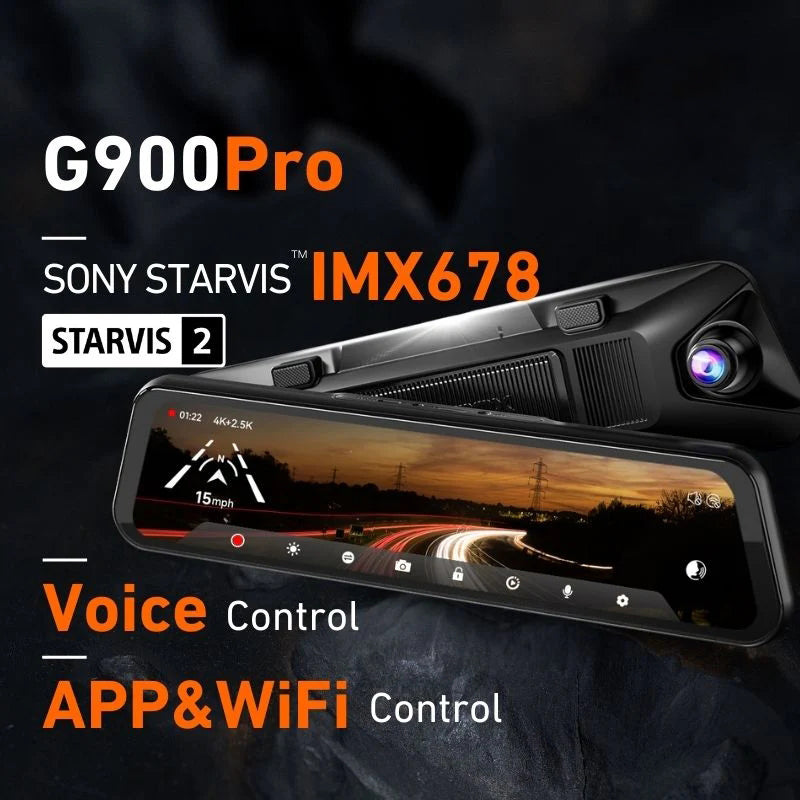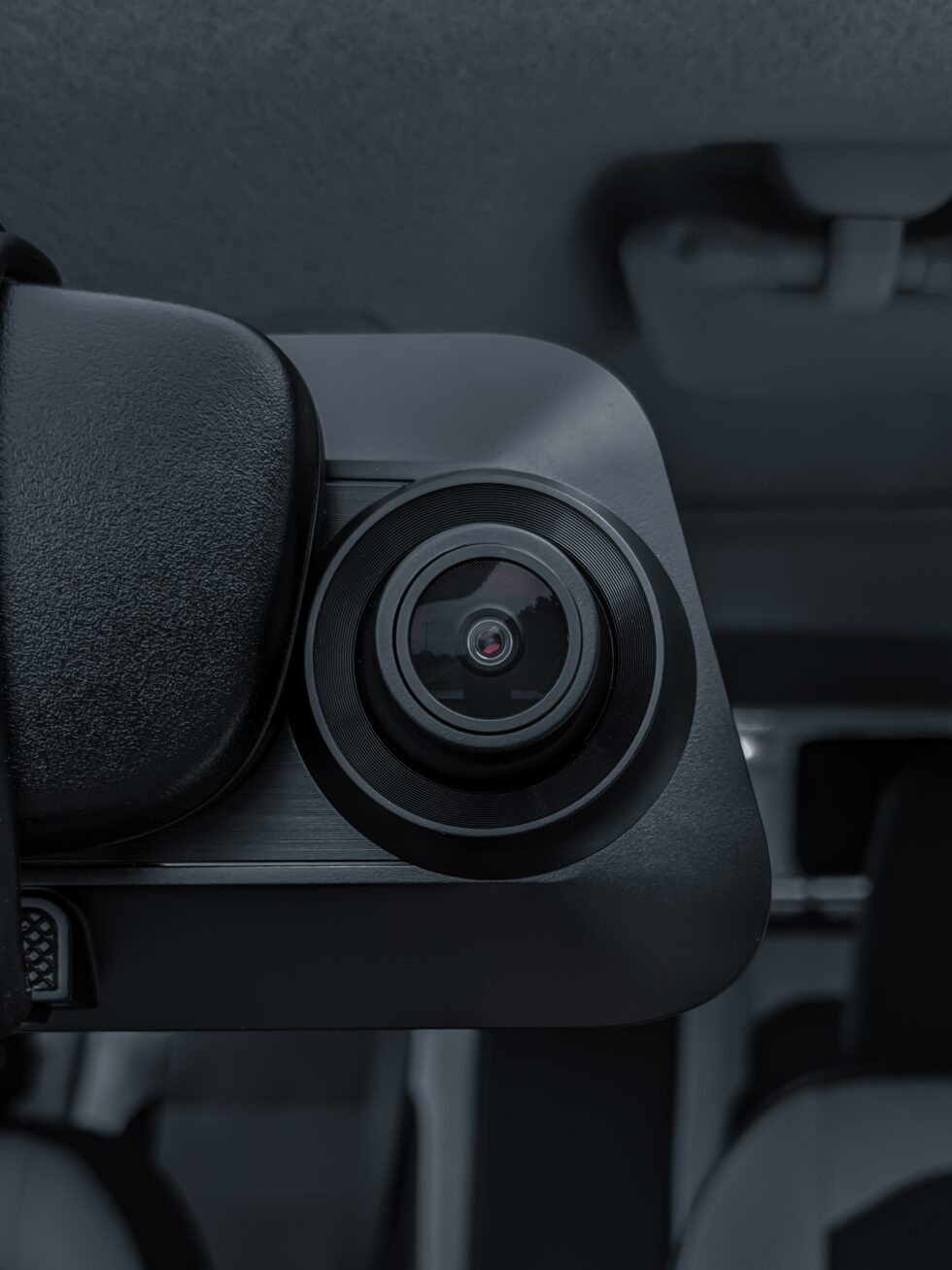What Is Loop Recording On A Dash Cam And How It Works
What Is Loop Recording
What is loop recording? It is a revolutionary innovation for video recording devices, effectively solving the problem of recording suspension due to limited storage space. When the memory card is almost full, it automatically deletes the earliest video, freeing new storage space for the newly recorded video.
However, before we talk about what loop recording is, let’s start with why loop recording is needed. If you don’t understand the need for loop recording, it’s hard to be interested in some deeper topics like “What does loop recording mean”.
Why Loop Recording Is Needed
Recently, “What is loop recording” has been heavily searched on Google. Some people who do not know much about this are likely to have the question —— why don’t we just take the whole recording? Is not that good? If all the conditions allow, of course, it is better to record the whole video than part.
To clarify this question, let’s assume two different cases.
In the first case, you can get an ideal video-recording machine, which can record all the moments forever. Will you like such a deal? Absolutely “yes”.
But in the second case, such a machine is never $1000 to get, or even $10,000 is far from enough. Now your answers may have changed.
Unfortunately, the second case is the real situation. Why such an ideal video-recording machine is so expensive? Because the price of memory cards is always not cheap.

How Expensive Are Memory Cards
However, what we are talking about here is not about how high the price marked on the tag, but in case you want unlimited video recording, the storage cost per unit of time spent is very high.
In terms of principle, video file size = (audio bitrate + video bitrate) x duration / 8. And. In surveillance and other video files without audio, the audio bitrate can be ignored. Thus, we can get a simplified version of the video size calculation formula.
Video file size = video bitrate x duration / 8.
So, if the video bitrate of the target device is known, then we can estimate the cost per unit time of continuous recording at different video definition.
In addition, for those who are interested, we list here the specific formula for calculating the video bitrate in detail.
video bit rate = image pixels (such as 1920 x 1080, 1280 x 720, etc. )
x image bit depth (such as 64 bits, 32 bits, etc. )
x number of frames per second (such as 60, 30, etc. )
However, considering that this calculation step will be tedious, we will not show the specific calculation process. Based on the commonly used video bit rates, we can give you a direct calculating result. The following table shows the estimated recording time that different memory cards can last under different video definition, where 480P, 720P, 1080P are standard 640 × 480, 1280 × 720, 1920 × 1080 screen size.
| Memory card capacity | 8G | 16G | 32G | 64G | 128G | |
| Estimated Recording Time (Unit: minutes) | 480P | 150 | 320 | 640 | 1280 | 2560 |
| 720P | 120 | 240 | 480 | 960 | 1920 | |
| 1080P | 60 | 120 | 240 | 480 | 960 | |
It is also possible to convert the units to “hours”, which is less precise but more intuitive:
| Memory card capacity | 8G | 16G | 32G | 64G | 128G | |
| Estimated Recording Time (Unit: hours) | 480P | 2.7 | 5.3 | 10.6 | 21.7 | 42.7 |
| 720P | 2 | 4 | 8 | 16 | 32 | |
| 1080P | 1 | 2 | 4 | 8 | 16 | |
As you can see, if you want to record continuously and never delete any previous video files, then a $15 32G TF card used by the lowest 480P standard recording can only meet your needs for less than half a day. Therefore, even with this minimum video format for 24-hour recording, you still need to spend about $1000 per month to store the recorded video. And so on, in less than 1 year you will spend more than $ 10,000 in video storage costs. Not to mention, in fact, 480P in the current level of technology to see, has been considered fuzzy, most cases people can only accept 720P and above video definition.
So, as we can see, from a realistic point of view, even if the full recording is good, it is also too expensive.

What Does Loop Recording Mean
Well, by now we can see that continuous recording and permanent storage is not realistic, due to the limited space of memory cards. Then it is time to answer the question —— “What is loop recording”.
Video recording devices can be broadly divided into two categories, used to record our lives (cell phones, cameras, etc.) and play a monitoring role of security (dash cam, etc.). The former has the characteristics of fragmentation, thus less likely to encounter the storage problems caused by the file which is too large. But loop recording is of great value to the latter. It really means a lot to this kind of recording device. And the detailed introduction of what does loop recording means to dash cam will be expanded in the next section.
What Is Loop Recording On A Dash Cam
Based on our professional dash cam manufacturer’s perspective, we can give you a detailed explanation of the meaning of loop recording on a dash cam.
The dash cam is usually suspended in the rearview mirror position. It is used for driving records, to facilitate the extraction of evidence of traffic accidents, as well as effective prevention of bumper stickers. It records the images and sounds of a vehicle on the road and other related information. After installation, it can provide evidence for traffic accidents, while the time, speed, location is recorded in the video.
However, if the whole process continues to record a clip, it not only takes a lot of memory, but also requires frequent manual deletion to continue to use. Otherwise, the recording will stop when the storage space is full. In addition, since the content of the video is all stored in one file, if this file is deleted, all the important clips included in it will be deleted also.
The Working Principle Of Dash Cam Loop Recording
Now you know the meaning of loop recording on a dash cam, then, the next question is how does loop recording work.
Specifically, when you set the dashcam to loop recording mode, it will be divided into several small video clips of the appropriate duration according to your choice. For example, when you set the dashcam to loop recording mode for 5 minutes, the camera will cut the entire captured video recording into a series of short video clips with a duration of 5 minutes per pin. After splitting, the dash cam will store these short videos in TF cards, being listed as clip No.0001, clip No.0002, etc. When the TF card installed in the dash cam runs out of memory space after capturing clip No.0100, it will automatically delete the oldest clip No.0001, and replace it with the latest clip No.0101.
In brief, by setting how long the duration of a recording clip is (usually 1 minute, 3 minutes, 5 minutes, 10 minutes, etc.), when the memory card capacity is almost full, the dash cam automatically deletes the most preceding clip to store the newly recorded video. It allows you to have the latest recordings from the last few hours without worrying about storage capacity.
Other Advantages Of Dash Cam Loop Recording
In addition to these mentioned above, loop recording can provide some other help.
On the one hand, large video files often take a long time to load, move or edit. Loop recording can split hour-long video files into several smaller parts. These smaller files are easier to manage and transfer.
On the other hand, it allows us to quickly find the clip that records the accident. Accidents usually happen within minutes, or even seconds. If each video segment is long duration, accident clips will become more troublesome to find out.
Emergency Mode Of Dash Cam Loop Recording
Many people are also worried that loop recording will overwrite the video of the accident, so it is impossible to use it for evidence. In fact, there is no need to worry, because loop recording can be described as an intelligent algorithm. Once an emergency occurs, the dash cam will automatically enter the emergency state, separately storing the accident clip which will not be overwritten.
Loop Recording Dashcams’ Purchase Recommendation And Use Guide
Purchase Recommendation
Now, we have figured out “what is loop recording”. If you are now interested in purchasing a dashcam with the relevant features, I would recommend our products very sincerely! All the loop recording dashcams produced by us WOLFBOX —— whether it is the newly released G900, G850, or all the other models such as G880 and G840H, which have been well received before —— are all equipped with loop recording function. So, if you choose WOLFBOX (woldbox G900 dash cam ), you don’t need to be bothered by the absence of the loop recording feature, because every product of ours is equipped with it.
We WOLFBOX believe that ensuring this important feature occurring in all products is a respect for all customers who purchase our dash cams. This revolutionary feature of loop recording is something we try to let every customer who buys our products experience, without being burdened with limited TF card storage space. The philosophy of our company is to make everyone’s life easier through technology —— we want our products to be more than just an accessory in the car, but a tool to enhance the quality of life for everyone.
Dash Cam Settings —— How To Turn Loop Recording On
The setting operation of all WOLFBOX’s loop recording dashcams can be described as the same. Regardless of the specific product models, you can follow this method to finish the dash cam settings.
First, you need to find the “Settings” menu in the dash cam. Then, find the “loop recording” column, and then press the OK button. In this interface, there will be three lengths of time to choose from – 1 minute, 3 minutes, 5 minutes. You can choose a length of time according to your own situation, and finally press the OK button. The time length setting is not too long or too short recommended for full use of the storage space of the TF card. We recommend that you choose 3 minutes or 5 minutes.
When these dash cam settings are settled, as mentioned above, when the TF card capacity is almost full, the dash cam will automatically delete the most preceding clip to store the newly recorded video.
Reasons For Not Being Able To Set Loop Recording
In general, the loop recording mode of the dash cam will be turned on default. But if the video is recorded in the emergency mode, it will not be covered and can only be manually deleted. So, if you do not delete these kinds of videos in a timely manner, due to the limited capacity of the memory card, the loop recording can be stopped. Therefore, when the screen of dash cam shows insufficient storage space, it means that you need to manually delete these special videos before use, rather than the loop recording mode has a problem.
In addition, sometime, you may find there are a series of videos recorded and stored in the TF card, even if you have never been in an emergency. The cause of this situation may be gravity sensitivity that is set too high. Due to the high gravity sensitivity set, even if the vehicle just has a slight vibration, the dash cam will also start to record video under emergency mode, which cannot be covered. So, it is recommended that the sensitivity of the gravity sensor should be set to medium.
How Can Videos Be Viewed On Your Computer?
The most used method is to take out the TF card, through the card reader, insert it into the memory card interface of the computer. Then the TF card will be recognized as a U disk, and you can directly operate the contents of the U disk on the computer.
Or you can also take the whole dashcam off and connect it with computer through data cable, then the dash cam will be treated as a U disk, and you can directly access the content in the recorder on the computer.
Conclusion
We hope that this article will give you an idea of the question —— “what is loop recording” —— which may be useful in your future the dash cam’s purchase choices. Even if you don’t plan to upgrade your dash cam now, the related knowledge can also help you better use your current dash cam, enjoying a better driving.






Leave a comment
This site is protected by hCaptcha and the hCaptcha Privacy Policy and Terms of Service apply.